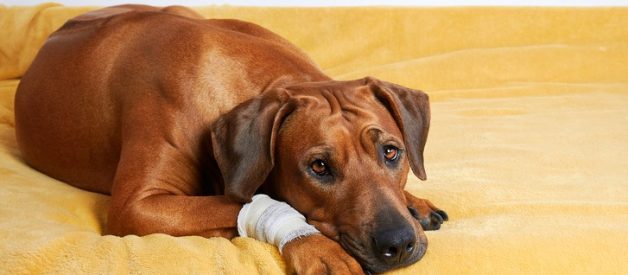Ensuring your pet’s smooth recovery after surgery is paramount to its long-term health and well-being. By planning and following a structured approach to post-surgical care, you can help your furry friend heal comfortably and quickly.
1. Preparing for Your Pet’s Return Home
Creating a Comfortable Space
Before bringing your pet home, it’s crucial to set up a safe and comfortable recovery area. Select a quiet, warm location free from excessive noise and distractions. This space should be easily accessible so your pet can rest and recuperate without the need for strenuous movement. Limit visitors and keep other pets away from the recovery area to minimize stress and household disruptions.
Essential Supplies
Stock up on essential supplies to support your pet’s recovery. These include:
-
Soft bedding to provide comfort.
-
Ample fresh water to keep your pet hydrated.
-
A nutritious food that is easy to digest.
-
Medications as prescribed by your vet.
-
Clean towels and blankets.
Monitoring your pet’s behavior and comfort levels, especially during the first few days post-surgery, will help you identify any issues quickly.
2. Immediate Post-Surgery Care
Monitoring Vital Signs
Upon returning home, closely monitor your pet’s vital signs. This includes checking their temperature, breathing rate, and general alertness. It’s important to know what normal signs are for your specific pet. For example:
-
Temperature: Cats and dogs typically have a temperature range between 100.5°F and 102.5°F.
-
Breathing: Steady and not labored breathing is a positive sign.
-
Alertness: Your pet should gradually become more alert after the effects of anesthesia wear off.
If you notice any abnormal signs, such as excessive lethargy, difficulty breathing, or a high fever, contact your vet immediately.
Feeding and Hydration
Maintaining proper nutrition and hydration is just as vital as keeping up with regular pet vaccinations. Offer small amounts of water frequently and introduce food gradually. Start with a bland diet that is easy on your pet’s stomach. Common options include boiled chicken and rice. Observe your pet’s appetite and energy levels as they recover.
For more info on how to support your pet post-surgery or for advice on vaccination schedules, consulting your veterinarian is always recommended.
3. Handling Medications and Follow-Up Appointments
Administering Medications
Proper medication administration plays a key role in your pet’s recovery. Follow your vet’s instructions meticulously, whether it’s antibiotics, pain relievers, or anti-inflammatory drugs. Here are some tips for giving medications:
-
Use treats or food to mask the taste of pills.
-
Administer liquid medications with a syringe.
-
Stay calm and reassure your pet to reduce their stress.
Ensure all medications are given at the correct times and dosages to avoid complications.
Scheduling Follow-Up Visits
Follow-up appointments are essential to monitor your pet’s recovery progress. During these visits, your vet can assess the healing process, remove sutures if necessary, and address any other concerns. Keep a detailed record of your pet’s symptoms, appetite, and any changes in behavior to discuss with the vet. This detailed tracking helps the vet make informed decisions regarding your pet’s care.
Suppose you are in need of comprehensive vet surgery in Westminster, MA. In that case, selecting a trustworthy clinic for both the procedure and follow-up care is crucial to ensuring a successful recovery for your pet.
4. Physical Activity and Movement Restrictions
Limiting Activity Levels
Restricting your pet’s activity is crucial to prevent injury and ensure proper healing. Limit their movements by:
-
Confine them in a small room or a crate if your vet advises them to do so.
-
Use a leash for bathroom breaks to control their movement.
-
Avoid allowing them to jump, run, or play vigorously.
Keeping your pet calm and entertained with gentle activities, such as providing chew toys or engaging with them softly, can help manage their energy levels during the recovery period.
Gradually Reintroducing Exercise
As your pet begins to heal, you can slowly reintroduce exercise. Follow your vet’s timeline and recommendations, which may include short, controlled walks and gradually increasing their activity levels. Monitoring your pet’s response to exercise is crucial; if they exhibit any signs of discomfort or fatigue, slow down the pace and consult your vet if necessary.
Pets undergoing regular procedures like spay and neutering also require structured post-surgery care to ensure a smooth and effective recovery, emphasizing the importance of a well-planned recovery process.
5. Managing Incisions and Preventing Infections
Inspecting the Surgical Site
Regularly check the surgical site for signs of healing or potential infection. Some things to look for include:
-
Redness, swelling, or heat at the incision site.
-
Unusual discharge or foul odor.
-
Severe or worsening pain.
Maintaining a clean and dry incision site is crucial. Follow your vet’s instructions for cleaning the area, typically involving gentle dabbing with a clean cloth and prescribed antiseptic solutions.
Preventing Licking and Scratching
Pets often tend to lick or scratch their incisions, which can lead to infections and prolonged healing times. To prevent this, use tools such as:
-
E-collars (Elizabethan collars or “cones”) to impede access to the surgical site.
-
Bodysuits or T-shirts to cover the incision area.
Understanding the risks of infections and taking preventive measures will help your pet recover quickly and smoothly.
6. Special Considerations for Spay and Neuter Surgeries
Recognizing Normal vs. Abnormal Behavior
Post-spay and neuter behaviors may differ slightly from other surgical recoveries. Common behaviors include reduced activity levels, mild swelling near the incision site, and changes in appetite. Keep an eye out for signs that warrant a vet visit, such as:
-
Excessive vomiting or diarrhea.
-
Constant, extreme lethargy or unresponsive behavior.
-
Persistent bleeding or pus from the incision site.
These indications may signal complications that need immediate veterinary attention.
Long-Term Benefits of Spaying and Neutering
Spaying and neutering provide multiple health benefits, including reducing the risk of certain cancers and behavioral issues. Ensuring pets undergo these procedures as advised contributes significantly to their long-term well-being. Additionally, it helps control the pet population, reducing the number of animals in shelters.
By maintaining consistent post-surgical care practices similar to those recommended for regular spay and neuter procedures, pet owners can ensure a successful recovery and enhance their pet’s quality of life. For more information on these benefits and practices, check it out with your vet.
Final Thoughts
Efficient post-surgical care is crucial to a speedy and complication-free recovery for your beloved pet. By preparing a comfortable recovery space, providing necessary supplies, closely monitoring your pet’s vital signs, following prescribed medication regimens, scheduling follow-up appointments, restricting physical activities, and preventing infections, you can help your pet return to its happy and healthy self. Always consult with your vet for personalized advice and support throughout the recovery process. Your dedication and care make all the difference in your pet’s healing journey.








